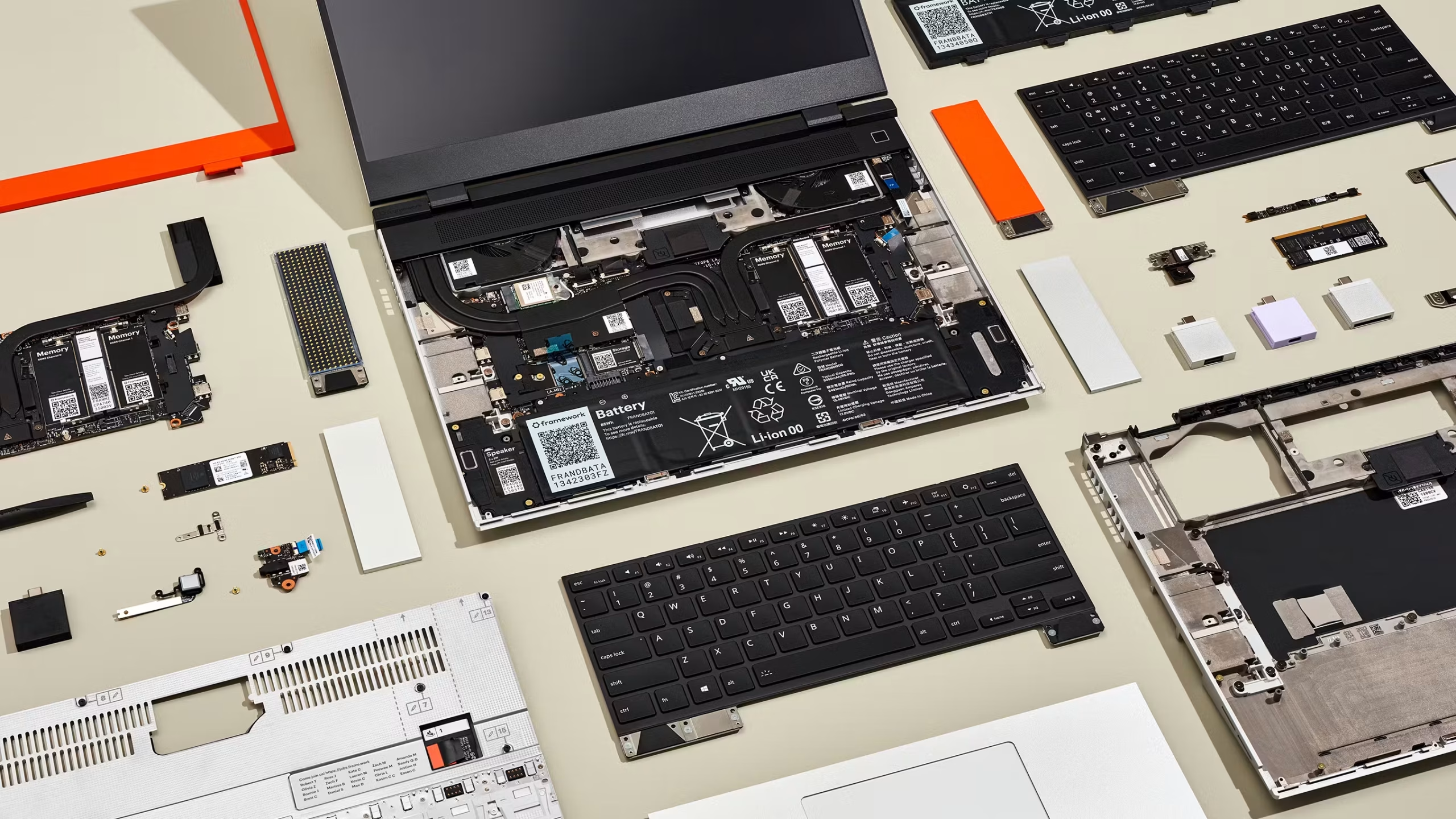How to Reduce Your Tech Carbon Footprint: Sustainable Tech Practices
Every little helps so don’t just cruise through your high tech lifestyle without know a thing or two about making them sustainable and start reducing your carbon footprint. These doesn’t mean giving up modern conveniences—it means making smarter choices. By opting for energy-efficient devices, extending the lifespan of our gadgets, and adopting sustainable tech habits, we can all play a role in minimising our impact on the planet.
The tech industry is responsible for a significant portion of global carbon emissions, from the energy-intensive manufacturing process to the electricity consumed by our devices. Plus, e-waste is piling up at an alarming rate, with millions of discarded gadgets ending up in landfills every year. Here are 8 effective ways you can reduce your tech carbon footprint.

1. Choose Energy-Efficient Devices
One of the simplest ways to lower your tech carbon footprint is by selecting devices that consume less energy. Many manufacturers now prioritize energy efficiency, helping consumers reduce both electricity usage and overall emissions.
Look for Energy-Efficient Certifications
When purchasing new devices, check for environmental certifications that indicate lower energy consumption:
- Energy Star: A U.S. government-backed certification for energy-efficient electronics and appliances.
- EPEAT (Electronic Product Environmental Assessment Tool): Rates electronics based on energy efficiency, recyclability, and use of environmentally friendly materials.
Opt for Low-Power Components
Certain hardware components consume less energy while still delivering excellent performance:
ARM-based processors: Found in Apple’s M-series chips and many mobile devices, these processors use less power compared to traditional x86 chips.
Solid-state drives (SSDs): More energy-efficient and faster than traditional hard disk drives (HDDs).
OLED and e-ink displays: OLED screens use less power than LCDs, while e-ink displays (used in e-readers like the Kindle) consume almost no energy when displaying static content.
Optimise Device Settings for Efficiency
Small adjustments to your device settings can significantly reduce power consumption:
- Lower screen brightness and enable dark mode when available.
- Activate battery saver mode to limit background processes.
- Set devices to enter sleep mode after a short period of inactivity.
By choosing energy-efficient devices and making simple optimisations, you can cut down on unnecessary power usage, lowering both your electricity bill and environmental impact.
2. Extend the Lifespan of Your Tech
One of the most effective ways to reduce e-waste and your tech carbon footprint is to keep your devices for as long as possible. The longer you use a gadget, the less frequently new ones need to be manufactured—reducing resource extraction, emissions, and waste.
Premium vs. Budget Products: The Longevity Factor
When buying new tech, consider long-term durability rather than just upfront cost. Premium and high-quality devices (e.g., MacBooks, ThinkPads, flagship smartphones) often last longer due to better build materials, repairability, and longer software support. While they come at a higher price, their extended lifespan makes them a more sustainable choice.
Budget and low-end gadgets may seem cost-effective initially, but they often have weaker components, shorter support cycles, and are more likely to break or become obsolete quickly. Many cheap devices lack replaceable parts, making repairs difficult or impossible.
Choosing a longer-lasting device means fewer replacements over time, reducing both e-waste and the carbon footprint associated with manufacturing and shipping.
Maintain and Upgrade Instead of Replacing
Proper care and timely upgrades can extend the usability of your tech:
- Regular cleaning: Keep devices free of dust and dirt, especially cooling fans and vents.
- Battery management: Avoid deep discharges and extreme temperatures to preserve battery health. We have written a guide on how to extend the life of your smartphone battery, do check it out.
- Upgrade instead of replacing: Add more RAM or swap out an old hard drive for an SSD to improve performance rather than buying a new device.
Protect Your Devices
Preventing physical damage can significantly extend your device’s lifespan. Use protective cases and screen protectors for smartphones and tablets. Invest in a surge protector to guard against power fluctuations. Last but not least, handle laptops and electronics with care to prevent accidental drops or spills.
By investing in durable, repairable devices and taking good care of them, you not only save money but also contribute to a more sustainable tech ecosystem.
3. Reduce E-Waste Responsibly
E-waste is one of the fastest-growing waste streams globally, with millions of devices being discarded every year. Many of these contain valuable materials like rare earth metals, which require energy-intensive mining. Instead of throwing away old tech, consider more responsible disposal methods.
Sell, Donate, or Repurpose Old Devices
Before disposing of a device, explore ways to extend its use with these three tips. Sell or trade-in old gadgets through manufacturer programs (e.g., Apple, Samsung, Dell) or marketplaces like eBay, Back Market, and Swappa. Second, donate working electronics to charities, schools, or community centers where they can still be useful. Third, repurpose old devices for new uses, such as turning an old smartphone into a dedicated music player, security camera, or digital photo frame. We have a huge resource on how to repurpose and upcycle old tech products. See articles below:
- Creative Ways to Repurpose Old Tablets for Home with List of Apps to Download
- How to Repurpose an Old Tablet for Business and Entrepreneur
- Creative Uses for Old Smartphones: 20 ideas to repurpose your mobile phone
- What to Do with Old Headphones: 10 Fun & Useful Ideas
- How to Transform Your Old Router into a Wi-Fi Range Extender
- DIY Solar-Powered Charger: Upcycle Old Tech for Green Energy
- Eco-Friendly Tech Upcycling Ideas for Earth Day
Recycle E-Waste Properly
If a device is truly unusable, ensure it is disposed of responsibly. Use certified e-waste recycling programs like those provided by local governments or companies such as Best Buy and Staples. Some manufacturers offer take-back and recycling initiatives to safely recover materials from old devices. Never throw electronics in regular trash bins—many contain hazardous substances that can leach into the environment.
By extending the life of electronics and ensuring proper disposal, you can reduce the environmental harm caused by e-waste.
4. Embrace Renewable Energy for Tech Use
The electricity used to power devices contributes to your carbon footprint, especially if your energy comes from fossil fuels. Switching to renewable energy sources for your tech can significantly reduce emissions.
Use Solar Power for Charging
Solar technology has become more accessible and affordable:
- Solar power banks: Store energy from the sun to charge smartphones, tablets, and other small devices.
- Solar panels for home use: If you own a home, consider installing solar panels to generate clean electricity for your tech and household needs.
- Portable solar chargers: Ideal for outdoor enthusiasts who want to charge gadgets while hiking or camping.
Switch to a Green Energy Provider
Many electricity providers offer green energy plans powered by wind, solar, or hydroelectric sources. If available in your area, switching to such a provider can significantly reduce the carbon footprint of your daily tech use.
Optimise Smart Home Setups
If you use smart home devices, ensure they contribute to energy efficiency rather than waste:
- Smart thermostats (e.g., Nest, Ecobee) can optimise heating and cooling based on usage patterns.
- Energy-efficient smart plugs can automatically turn off devices when not in use.
- LED lighting and motion sensors help reduce unnecessary energy consumption.
Using renewable energy and optimizing power usage ensures that your tech habits align with sustainability goals.

5. Opt for Cloud and Digital Sustainability
Cloud computing and digital services offer convenience, but they also consume significant amounts of energy. Every email, streamed video, and stored file contributes to data centre energy usage. Fortunately, there are ways to reduce your cloud and digital carbon footprint.
Use Cloud Services Powered by Renewable Energy
Many major tech companies are investing in renewable energy for their data centers. Consider choosing cloud providers committed to sustainability:
- Google Drive, Microsoft OneDrive, and Apple iCloud are among the cloud services aiming for carbon neutrality.
- Ecosia (an alternative to Google Search) uses ad revenue to plant trees, making online searches more eco-friendly.
Reduce Digital Waste
Unnecessary digital storage increases energy consumption in data centres. Streamline your digital footprint with these habits; regularly delete old emails, especially those with large attachments. Secondly, unsubscribe from spam and unnecessary mailing lists to reduce email server loads. Finally, clean up unused cloud storage by removing redundant files and backups.
Optimise Streaming and Internet Usage
Streaming media and online services account for a large share of global internet energy consumption:
- Lower video resolution when HD isn’t necessary (e.g., watching YouTube tutorials or background music videos).
- Download movies, music, and podcasts for offline use instead of repeated streaming.
- Use Wi-Fi instead of mobile data when possible, as cellular networks require more energy.
By making smarter digital choices, you can significantly cut down on unnecessary energy consumption while still enjoying the benefits of modern technology.

6. Rethink Tech Consumption Habits
A major contributor to the tech carbon footprint is overconsumption—constantly upgrading to the latest devices, even when the current ones are still functional. Adopting a more mindful approach to tech purchases can reduce waste and lower environmental impact.
Buy Refurbished or Second-Hand Tech
Many electronics are discarded long before they stop working. Instead of always buying new, consider the following. Get your devices from certified refurbished devices from manufacturers (e.g., Apple, Dell, Lenovo, Samsung) that come with warranties and like-new performance. Then there are second-hand electronics from platforms like Back Market, eBay, or Swappa, which often have significantly lower carbon footprints than new ones.
Avoid Frequent Upgrades
Tech companies market new models aggressively, but most upgrades are incremental rather than revolutionary. Ask yourself:
- Do I really need a new device, or can I extend the life of my current one?
- Would upgrading individual components (RAM, storage, battery) be a better alternative?
- Can I wait for a more meaningful innovation before replacing my device?
Support Sustainable Tech Brands
Some companies are leading the way in sustainability:
- Fairphone: Modular and repairable smartphones made with ethically sourced materials.
- Framework Laptop: A fully upgradeable laptop designed to last for years.
- Dell, HP, Apple, and Lenovo: These major brands have set ambitious carbon neutrality and recycling goals—check their sustainability policies before purchasing.
By making conscious purchasing decisions, you can reduce the demand for resource-intensive manufacturing and lower your overall carbon footprint.

7. Sustainable Internet and Streaming Habits
The internet may be invisible, but it has a massive environmental impact. Data centers that power cloud services, video streaming, and social media consume huge amounts of energy, often sourced from fossil fuels. Adopting more efficient online habits can make a difference.
Adjust Streaming Quality
Video streaming is one of the largest contributors to internet-related emissions. Simple adjustments can reduce energy use. Lower resolution when HD isn’t necessary (e.g., 480p instead of 1080p for background videos). Consider using offline downloads instead of streaming repeatedly. And, turn off autoplay to avoid unnecessary streaming when not watching actively.
Choose Greener Web Services
Some companies are actively reducing their environmental impact:
- Search engines like Ecosia use ad revenue to plant trees.
- Website hosting services such as GreenGeeks and Kualo run on renewable energy.
- Cloud storage providers with green data centers (Google, Apple, and Microsoft have pledged carbon neutrality).
Reduce Unnecessary Data Usage
- Limit background app activity to reduce unnecessary data processing.
- Delete old emails and unused files to reduce cloud storage energy consumption.
- Use ad blockers to prevent energy-intensive tracking and video ads from loading.
Being mindful of how you use online services can contribute to a more sustainable digital ecosystem.

8. Reduce the Carbon Footprint of Work & Productivity
With remote work, video calls, and digital collaboration becoming the norm, workplace tech use has a growing environmental impact. Making small adjustments in your professional tech habits can lead to significant savings in energy.
Use Energy-Efficient Devices for Work
Laptops are more energy-efficient than desktops, consuming significantly less power.
Turn off or put devices in sleep mode when not in use.
Use eco-friendly printers and print only when necessary, opting for digital documents instead.
Optimise Virtual Meetings
Video conferencing requires considerable data processing power, increasing energy demand. To save on energy use, turn off video when unnecessary and set to audio-only calls use far less data. You can also schedule fewer but more efficient meetings to reduce server loads. Use sustainable conferencing tools—some platforms optimise their data centres for energy efficiency.

Eco-Friendly Office Practices
Here are some eco-friendly office practices: Use shared drives instead of endless email attachments to reduce data redundancy. You can enable power-saving settings on workstations to reduce idle energy consumption. And, encourage remote work policies to reduce the environmental impact of commuting. Optimizing work-related tech habits can significantly cut down on digital emissions while improving efficiency.
Conclusion
Reducing your tech carbon footprint doesn’t mean giving up technology—it’s about using it more responsibly. By making informed choices, from purchasing energy-efficient devices to extending product lifespans, reducing e-waste, and adopting better digital habits, we can all contribute to a more sustainable future.
Technology will continue to evolve, but how we engage with it determines its impact on the planet. Small changes—such as lowering streaming resolution, buying refurbished tech, or using solar chargers—add up over time.
By embracing these sustainable tech practices, you not only help reduce environmental harm but also save money and promote a greener future. Start today—pick one habit from this list and make a conscious effort to adopt it. The planet will thank you. Here are the key takeaways:
| Section | Key Takeaways |
|---|---|
| 1. Choose Energy-Efficient Devices | Look for Energy Star, EPEAT-certified devices, use ARM-based processors, SSDs, OLED screens, and optimise power settings. |
| 2. Extend the Lifespan of Your Tech | Invest in durable, premium devices instead of cheap, short-lifespan gadgets. Upgrade components, replace batteries, and protect devices from damage. |
| 3. Reduce E-Waste Responsibly | Sell, donate, or repurpose old gadgets. Recycle e-waste through certified programsinstead of dumping it in landfills. |
| 4. Embrace Renewable Energy for Tech Use | Use solar chargers, green energy providers, and optimise smart home devices to reduce electricity consumption. |
| 5. Opt for Cloud and Digital Sustainability | Choose eco-friendly cloud services (Google, Apple, Microsoft), delete unnecessary data, and limit high-energy streaming. |
| 6. Rethink Tech Consumption Habits | Buy refurbished/second-hand tech, delay frequent upgrades, and support sustainable brands like Fairphone & Framework. |
| 7. Sustainable Internet & Streaming Habits | Lower video resolution, use ad-free browsing, and switch to green hosting services. |
| 8. Reduce the Carbon Footprint of Work & Productivity | Use laptops instead of desktops, enable power-saving settings, and minimize video calls to reduce energy use. |
Related Sustainable Tech Articles
Here are more sustainable technology articles you might want to sink your teeth into:
- DIY Solar-Powered Charger: Epicycle old tech for green energy
- Best Solar-Powered Gadgets for a Greener Lifestyle
- The Impact of AI on Renewable Energy Solutions
- How to Reduce Your Tech Carbon Footprint: Sustainable Tech Practices
- Eco-friendly Tech Upcycling Ideas for Earth Day
- Top 15 Eco-Friendly Gadgets for Earth Day













